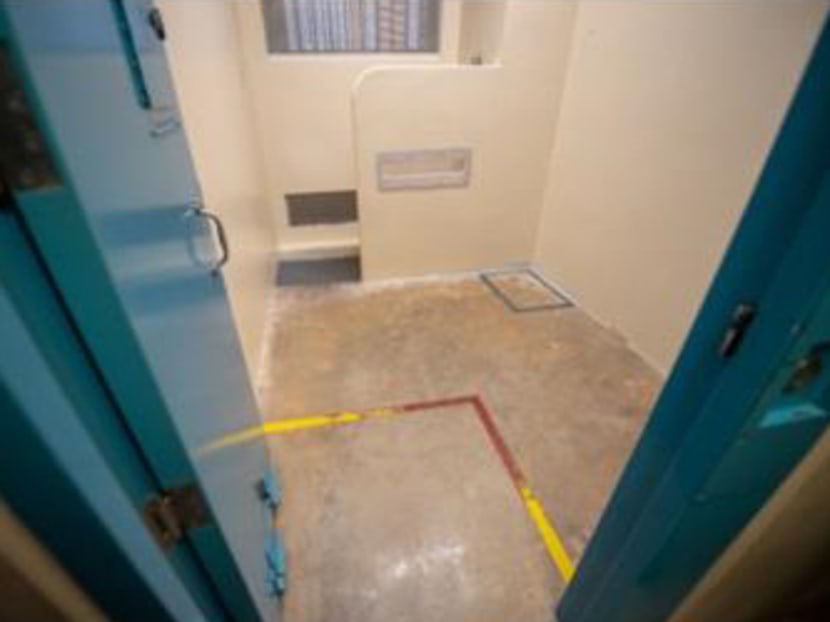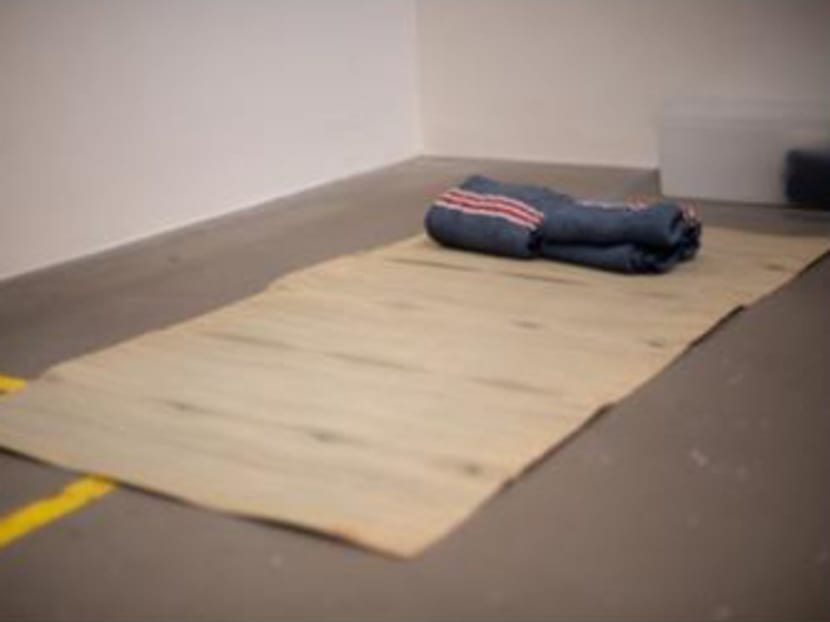 |
| Singapore’s prison capacity is currently at about 70 per cent, Home Affairs Minister K Shanmugam said. |
- The "austere" regime and environment in Singapore's prisons were deliberately designed, Home Affairs Minister K Shanmugam said
- The Singapore Prison Service's "tight approach" has, among other things, kept suicides among prisoners low compared with other jurisdictions, he said
- Mr Shanmugam was responding to increased interest in prison conditions following the airing of a CNA documentary
- Mr Shanmugam said that Singapore's approach in managing the prisons have also led to lower assault rates compared to some other jurisdictions, where gangs informally run the place
- The minister also explained why certain race-based data relating to crime are not disclosed publicly, and how the Government arrives at this decision in consultation with various community groups
TAUFIQ ZALIZAN
July 4, 2022
SINGAPORE — In response to questions raised about the conditions in Singapore's prisons, Minister for Home Affairs K Shanmugam said the "austere" regime and environment were deliberately designed and that the "tight approach" has, among other things, kept suicides among prisoners low compared with other jurisdictions.
He also said that Singapore’s prison capacity is currently at about 70 per cent, compared with a United Nations report in 2021 that found that almost half prisons in 100 countries and territories were operating at over 100 per cent capacity.
Mr Shanmugam, who is also Law Minister, was giving these details on the local prison situation in a ministerial statement in Parliament on Monday (July 4), which he made in response to parliamentary questions from several Members of Parliament following an increased interest in Singapore's prison operations and conditions.
Mr Shanmugam noted that the increased interest came after a CNA documentary, "Inside Maximum Security", was aired recently, giving a glimpse of what inmates go through during their detention.
On Monday, Mr Shanmugam said that the Singapore Prison Service places a lot of emphasis on security and monitoring to address potential situations where inmates might try to harm themselves, acquire contraband and create security situations.
“Our approach is probably one reason, for example, for lower suicide rates. Between 2017 and 2021, there was one case of suicide in Singapore’s prisons,” he said.
This compares to 10 cases in Hong Kong over the same period and 12 cases and 22 cases respectively in Norway and Denmark between 2017 and 2020.
SECURITY, HYGIENE ISSUES IN PLACING FAN AND BEDDING
Mr Shanmugam also laid out the considerations behind various aspects of the physical conditions in prisons.
On why there are no fans inside the cells, Mr Shanmugam said they may act as potential anchor points for suicide attempts.
“They could also be dismantled, and parts potentially used as weapons,” he said.
In lieu of fans, the air in the cells are ventilated naturally and mechanically, he added.
The cells do not have mattresses, Mr Shanmugam said, as they are not ideal in Singapore’s hot and humid climate and would give rise to hygiene issues.
"Generally, the current bedding also minimise the security risks of inmates hiding contraband items in the cells," he added.
But beds are given to inmates who require additional care and are provided at medical wards and correctional units catered for assisted living, he said.
Replying to a supplementary question, Mr Shanmugam also said that Singapore prisons have been looking at alternative possible material for quite some time that will "meet the security requirements and will work in our climate", but have not found any possible substitute at the moment.
 |
| Inmate bedding provided at Singapore's prison. |
RACE-BASED PRISON DATA MAY ‘DEEPEN’ STEREOTYPES
Earlier on Monday, Mr Shanmugam replied to a parliamentary question on why the authorities do not publicly disclose figures on the racial composition of the prison inmate population and criminal offenders.
Acknowledging that minorities are disproportionately represented in the prison inmate population and in crime statistics, he said that disclosing data with a racial breakdown might deepen racial stereotypes.
“I say ‘deepen’ specifically, because it is not as if these stereotypes don’t exist. They exist,” he said, adding that regularly releasing such breakdowns would risk “hardening the stereotypes”.
When the Government does release race-based data, it would be for the purpose of mobilising the communities into action and finding interventions that are better suited for different groups.
“Our assessment is that in these cases, the upside of spurring the communities to take action outweighs the negative of potentially deepening the stereotypes.”
Mr Shanmugam added that the Government has engaged many stakeholders and community leaders on their views about releasing race-based crime stats.
“The unanimous view... was that it will not benefit our communities and Singapore’s society, and it would encourage stereotypes and harm community relations,” he said.
Examples of stakeholders it has approached include self-help groups such as Yayasan Mendaki and Hindu Endowments Board, and various language and religious-related bodies.
The minister said these groups agreed that such race-based figures should continue to be shared in closed-door settings with community leaders and groups, so that the issues can be addressed as a community.
“We will continue our current approach of disclosing such information on a selective basis, where doing so would be useful and positive for the community and society.”
SPECIALISED CARE INMATES WITH SEVERE MENTAL HEALTH ISSUES
In reply to a parliamentary question about measures to address needs of inmates who suffer from mental conditions, Mr Shanmugam said that about five per cent of inmates are on medication for the management of their mental health condition as of March 2022.
Most common conditions were adjustment and mood disorders, he said.
While inmates with mild mental health issues are housed with the general inmate population, they are seen regularly by prison psychiatrists and go through rehabilitation programmes.
“Those who had severe mental health issues may be housed in a specialised facility managed with IMH (Institute of Mental Health),” he added, which allows for more intensive intervention and therapy.
On after-release support, Mr Shanmugam said that inmates with mental and medical conditions may be referred to IMH or restructured hospitals for follow-up care.
“OFFICERS RUN OUR PRISONS, NOT INMATES, NOT GANGS”
Providing further comparisons with other jurisdictions, Mr Shanmugam said that the tight approach in prison management ensures that authorities are on top of possible gang situations there.
This compares to other places where prison gangs informally set the order including controlling the underground trade, and where weaker inmates are often at the mercy of stronger ones, leading to high assault rates.
Singapore’s prisons’ assault rate is around 47 per 10,000 inmates since the financial year of 2019, said Mr Shanmugam.
In contrast, the rates vary between 100 to over 500 in places like South Korea, Englands and Wales and Hong Kong.
“In Singapore, the position is quite different: our prisons officers run our prisons, not gangs,” he said, adding that the prisons adopt a zero-tolerance stance towards gang-related activities.
This does not mean that some bad things do not happen, said Mr Shanmugam.
“But we maintain more control and on the whole, less of these bad things happen, compared with most other places.”
No comments:
Post a Comment